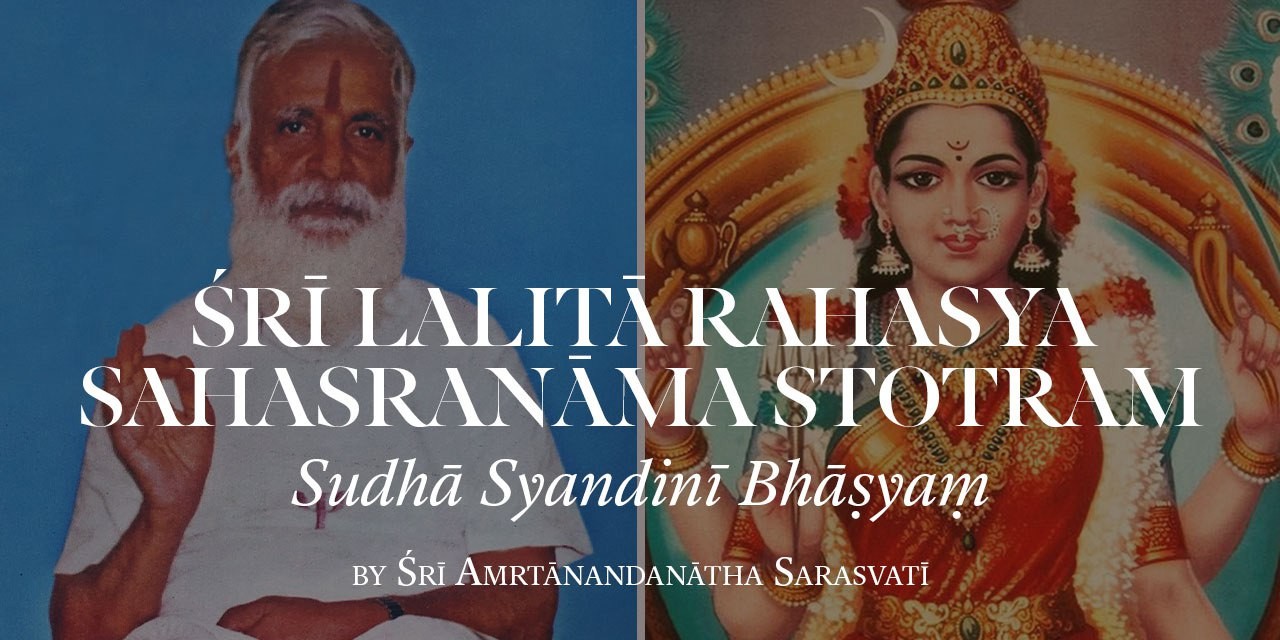- Edited

95. Kulayoginī
She practices Yoga to the Kula.
In the Tantrika interpretation Kula Yogini is a woman sādhaka who is available for the kaulasādhana. This may be either singly or a Kula which means a group or a family or a tribe.
The word Yoga means approach to the heart. Yah is the symbol for the vāyutattva. The vāyutattva is located in the Anāhata or the heart centre. Its property or tanmatra is sparśa or contact. The root of 'go' means to go towards. So the yoga means the approach to the divine or the contact with the divine or the communion with the divine residing in the heart called the Daharākāśa. Kulayoginī is therefore that in the process of antaryāga associated with the Kaulas, after having favours in the path of Kula many times to and fro, one must finally bring the awareness to rest in the heart or centre and allow it to go lower than that. As explained earlier, the centres below the navel centers are the centers of darkness. The centers above the navel centers are the centers of knowledge and light. If one tries to keep the awareness constantly at Viśuddhi or Ājñā centers, the normal functioning of life as an individual cannot be done. These higher centers are suitable for going into the deep depths of meditation. Since they interfere with the bodily functions, it is better to live the awareness at the Anāhata or the heart center listening to the 'oṁkāra' or the ‘īṁkāra' at the heart continuously. For the yogi this is possible even when talking with others. This does not interfere with the normal functioning. As explained earlier, the mantra Pañcadaśi of Devi contains the four īṁkāras.
The fourth one refers to the Turīyātīta state.
The third one refers to the Turīya state.
The second one refers to the Svāpna and Suṣupti.
The first one refers to the Jāgrat.
Listening to the īṁkāra in the third hrīṁ permits one to remain in the Turīyātīta state which is the goal of Jīvanmukta.
Source: Śrī Amṛtānandanātha Saraswatī "Sudhā Syandinī Bhāṣyaṃ" Typed Manuscript
(an incomplete commentary on Lalitā Sahasranāma)

